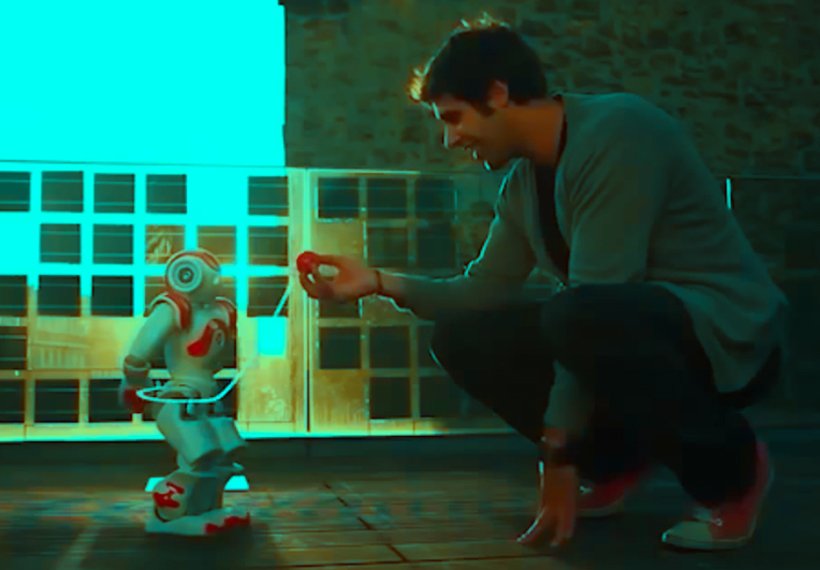NAO robotMuch angst is given over to wondering whether robots will take people’s jobs, and in that case specifically which jobs they might take. If the idea of robots in the work place, seemed in the past to be a dystopian possibility that would never happen, that possibility is now becoming a mainstream reality. From automated cashiers in supermarket chains to robot surgery systems able to operate patients, significant developments are underway. Robots are increasingly able to do some of the work that humans previously did, and many venture to research what seems to be a new type of economy taking over the western world: the robot economy. Arguably the creative industries in the past have had reason to be unconcerned in this regard, after all, can robots really be creative? But it is possible that automation and robots could threaten at least some sectors of the creative workforce after all. According to Nesta (2014):
“Today, more people work in creative jobs than ever before. In the UK, there are 1.8 million creative jobs according to government classifications.”
This figure is considered to be rising significantly faster than in the broader workforce overall. Additionally, it is argued that considering the concept of “creativity” differently can lead to an even higher proportion of people that may be considered as creative. In defence of this it has been suggested by Richard Florida that in fact in the USA approximately a third of the workforce is made up of creative work, and that this accounts for an even higher proportion when looking at salaries, as half of all wages in the USA are considered to be creative. This figure has grown dramatically since 1980, when the figure is estimated to have been less than 20%, and at the start of the 20th century it was approximated at 10%. Digital technologies have fueled this growth, and have allowed creativity to be sent and received globally.
Da vinci surgical robotWhat is considered “creative” today might not be creative any longer in the future
However, this could all be set to change and it is believed by some that roles that might today be thought of as creative may soon be included in automation. This is a real worry for some. In fact, a recent study in the USA reviewed the possibilities for expansion of automation in the US workforce over a period of 10 to 20 years in the future. This determined that it was fully possible that 47% of the jobs that were found in the workforce right now might end up being automated. As a result this has led to people questioning if the same thing could happen in Europe, and coming to the conclusion that of course, it could. In turn this has led to speculation regarding the extent to which creative roles may be resistant to automation. It raises a number of questions of what people would do, especially if almost 50% of jobs were to disappear, as the aforementioned study suggests.
The following video explores the possibility of software replacing a large number of jobs over the next couple of decades surveying various areas affected by the robot economy, inclusively areas such as music, considered to be a creative one:
Utilising a definition of creativity that suggests that this word means “the use of imagination or original ideas to create something” a study was carried out to classify specific occupations in the USA as either creative or non-creative in nature. In total, 120 occupations were assessed. The researchers asked whether each type of role really required imagination or new ideas to develop something original. The work used an algorithm to assess all of the 702 job roles in the US for creativity based on this.
This led to the finding that approximately 21% of the workforce of the USA might currently be considered as being “highly creative”. As can be seen this is considerably lower than the figures that had been produced by Florida previously. Occupations that were found to be creative included architects, web designers, artists, public relations workers and IT specialists. Following on from this assessment it was also found that only a very small number of these people would be at risk of automation taking their jobs. It was estimated that 86% of workers in these highly creative classifications would face any risk of automation. The study was also carried out in the UK, where it was discovered that there was a higher number of people employed in creative roles, reaching 24% of the workforce. However, once again, very few were at risk for automation, with 87% facing low or no risk at all.
The conclusion that this naturally leads to is that while some people that are creative may find their jobs to be at risk of automation, this is a very small number. Indeed, when assessing the 30 occupations considered to be “creative” by the government, it was found that there is a probability of 0.29 that they may become automated. This is really very low. The conclusion? It seems unlikely that the robots are likely to take over truly creative occupations any time soon.

Paula Newton is a business writer, editor and management consultant with extensive experience writing and consulting for both start-ups and long established companies. She has ten years management and leadership experience gained at BSkyB in London and Viva Travel Guides in Quito, Ecuador, giving her a depth of insight into innovation in international business. With an MBA from the University of Hull and many years of experience running her own business consultancy, Paula’s background allows her to connect with a diverse range of clients, including cutting edge technology and web-based start-ups but also multinationals in need of assistance. Paula has played a defining role in shaping organizational strategy for a wide range of different organizations, including for-profit, NGOs and charities. Paula has also served on the Board of Directors for the South American Explorers Club in Quito, Ecuador.










